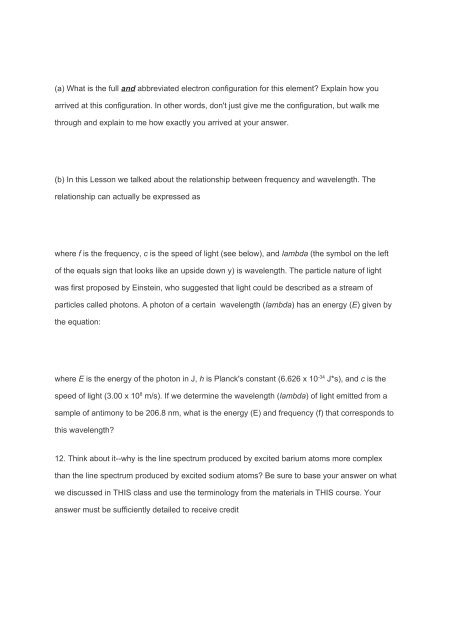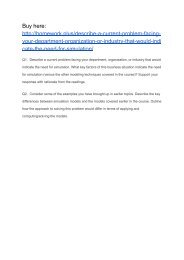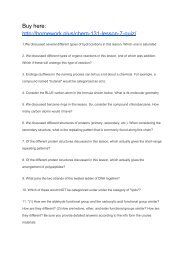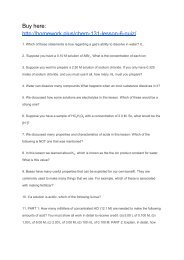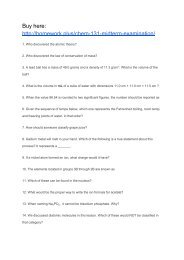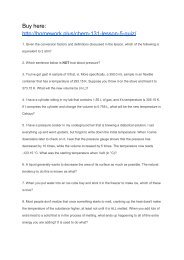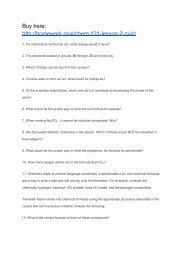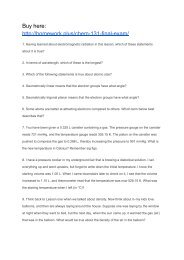CHEM 131 Lesson 4 Quiz
CHEM 131 Lesson 4 Quiz
CHEM 131 Lesson 4 Quiz
You also want an ePaper? Increase the reach of your titles
YUMPU automatically turns print PDFs into web optimized ePapers that Google loves.
(a) What is the full and abbreviated electron configuration for this element? Explain how you<br />
arrived at this configuration. In other words, don't just give me the configuration, but walk me<br />
through and explain to me how exactly you arrived at your answer.<br />
(b) In this <strong>Lesson</strong> we talked about the relationship between frequency and wavelength. The<br />
relationship can actually be expressed as<br />
where f is the frequency, c is the speed of light (see below), and lambda (the symbol on the left<br />
of the equals sign that looks like an upside down y) is wavelength. The particle nature of light<br />
was first proposed by Einstein, who suggested that light could be described as a stream of<br />
particles called photons. A photon of a certain wavelength (lambda) has an energy (E) given by<br />
the equation:<br />
where E is the energy of the photon in J, h is Planck's constant (6.626 x 10 -34 J*s), and c is the<br />
<br />
speed of light (3.00 x 10 8 m/s). If we determine the wavelength (lambda) of light emitted from a<br />
sample of antimony to be 206.8 nm, what is the energy (E) and frequency (f) that corresponds to<br />
this wavelength?<br />
12. Think about it--why is the line spectrum produced by excited barium atoms more complex<br />
than the line spectrum produced by excited sodium atoms? Be sure to base your answer on what<br />
we discussed in THIS class and use the terminology from the materials in THIS course. Your<br />
answer must be sufficiently detailed to receive credit


